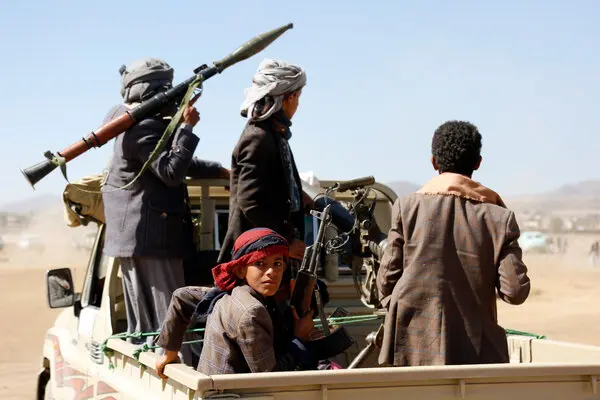The United States conducted its sixth strike on Houthi rebel sites in Yemen on January 19 through fighter jets, targeting anti-ship missile launchers. Despite these efforts, Houthi attacks on ships in the southern Red Sea and Gulf of Aden persist almost daily. The Houthi rebels, backed by Iran, justify their actions in the Red Sea corridor as a response to Israel’s offensive against Hamas in the Gaza Strip—a conflict now in its fourth month, marked by high casualties and extensive damage.
1. Continuous US Strikes on Houthi Sites:
On January 19, US fighter jets, including F/A-18 aircraft from the USS Dwight D. Eisenhower aircraft carrier, carried out the sixth consecutive strike against Houthi rebel sites in Yemen. The focus was on anti-ship missile launchers set for deployment. The exact locations of these strikes remain unconfirmed, but reports mention air raids in Hodeida targeting the al-Jabaana neighborhood.
2. Admission by President Biden:
President Joe Biden acknowledged that previous strikes have not deterred Houthi attacks on vessels in the Red Sea, causing disruptions to global shipping. Despite this, the US intends to continue its efforts.
3. White House’s Stance and Preemptive Missions:
The White House, through National Security Council spokesperson John Kirby, emphasized the continuation of preemptive missions. These actions aim to enhance security in shipping lanes by targeting Houthi missile launchers poised for anti-ship missile deployment.
4. Houthis Reclassified as Global Terrorists:
The Biden administration reclassified the Houthi rebels as specially designated global terrorists, imposing sanctions to cut off financial support to violent extremist groups. Retaliatory strikes will persist, but essential humanitarian aid to Yemenis will continue.
5. US-UK Collaboration Against Houthis:
The US and UK are exploring ways to enhance efforts against Houthi militants without triggering a broader war. The focus includes disrupting Iranian resupplies and conducting more assertive pre-emptive strikes. However, there is a risk of escalating tensions with Iran.
6. US Naval Reshuffling in the Mediterranean:
In anticipation of a prolonged engagement in the region, the US Navy is reorganizing its warship deployment in the Middle East. The USS Bataan, an amphibious warship, is leading the mission, with concerns about the Gaza conflict escalating into a wider regional confrontation.
7. Houthi Political Gains After US Strikes:
The Houthi rebels, in control of Yemen’s capital since 2014, have gained political clout in the country. Direct military clashes with the US strengthen their position in Yemen’s complex political landscape, aligning with Iran and other militant groups.
8. Impact of Houthi Attacks on Trade:
Houthi attacks on ships in the southern Red Sea disrupt global trade, but vessels have reported minimal damage. While some shipping avoids the waterway, the limited harm suggests a cautious approach by the Houthis.
9. Yemeni ‘Pirate’ Goes Viral:
Nineteen-year-old Rashed Al-Haddad, a self-proclaimed “pirate” from Yemen, gained attention on social media for video selfies aboard a commercial container ship reportedly seized by the Houthis. The viral videos focus on the Palestinian cause.
10. Houthi Intentions in the Red Sea:
Houthi rebels clarified that their intentions are not to expand attacks on shipping in the Red Sea beyond blockading Israel and retaliating against the US and UK for airstrikes. They emphasize that their actions aim to pressure Israel and not escalate further.
The situation in the Red Sea involving Houthi rebels, US airstrikes, and the broader regional context remains complex, with ongoing efforts to address the challenges posed by the conflict in Yemen and its spillover effects.














